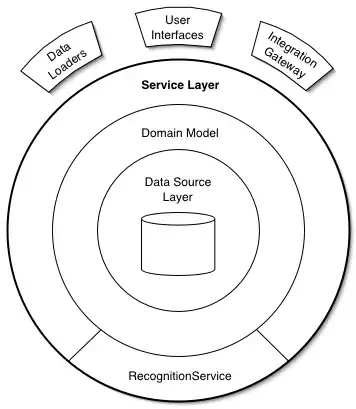Situation
Earlier this evening I gave an answer to a question on StackOverflow.
The question:
Editing of an existing object should be done in repository layer or in service?
For example if I have a User that has debt. I want to change his debt. Should I do it in UserRepository or in service for example BuyingService by getting an object, editing it and saving it ?
My answer:
You should leave the responsibility of mutating an object to that same object and use the repository to retrieve this object.
Example situation:
class User {
private int debt; // debt in cents
private string name;
// getters
public void makePayment(int cents){
debt -= cents;
}
}
class UserRepository {
public User GetUserByName(string name){
// Get appropriate user from database
}
}
A comment I received:
Business logic should really be in a service. Not in a model.
What does the internet say?
So, this got me searching since I've never really (consciously) used a service layer. I started reading up on the Service Layer pattern and the Unit Of Work pattern but so far I can't say I'm convinced a service layer has to be used.
Take for example this article by Martin Fowler on the anti-pattern of an Anemic Domain Model:
There are objects, many named after the nouns in the domain space, and these objects are connected with the rich relationships and structure that true domain models have. The catch comes when you look at the behavior, and you realize that there is hardly any behavior on these objects, making them little more than bags of getters and setters. Indeed often these models come with design rules that say that you are not to put any domain logic in the the domain objects. Instead there are a set of service objects which capture all the domain logic. These services live on top of the domain model and use the domain model for data.
(...) The logic that should be in a domain object is domain logic - validations, calculations, business rules - whatever you like to call it.
To me, this seemed exactly what the situation was about: I advocated the manipulation of an object's data by introducing methods inside that class that do just that. However I realize that this should be a given either way, and it probably has more to do with how these methods are invoked (using a repository).
I also had the feeling that in that article (see below), a Service Layer is more considered as a façade that delegates work to the underlying model, than an actual work-intensive layer.
Application Layer [his name for Service Layer]: Defines the jobs the software is supposed to do and directs the expressive domain objects to work out problems. The tasks this layer is responsible for are meaningful to the business or necessary for interaction with the application layers of other systems. This layer is kept thin. It does not contain business rules or knowledge, but only coordinates tasks and delegates work to collaborations of domain objects in the next layer down. It does not have state reflecting the business situation, but it can have state that reflects the progress of a task for the user or the program.
Which is reinforced here:
Service interfaces. Services expose a service interface to which all inbound messages are sent. You can think of a service interface as a façade that exposes the business logic implemented in the application (typically, logic in the business layer) to potential consumers.
And here:
The service layer should be devoid of any application or business logic and should focus primarily on a few concerns. It should wrap Business Layer calls, translate your Domain in a common language that your clients can understand, and handle the communication medium between server and requesting client.
This is a serious contrast to other resources that talk about the Service Layer:
The service layer should consist of classes with methods that are units of work with actions that belong in the same transaction.
Or the second answer to a question I've already linked:
At some point, your application will want some business logic. Also, you might want to validate the input to make sure that there isn't something evil or nonperforming being requested. This logic belongs in your service layer.
"Solution"?
Following the guidelines in this answer, I came up with the following approach that uses a Service Layer:
class UserController : Controller {
private UserService _userService;
public UserController(UserService userService){
_userService = userService;
}
public ActionResult MakeHimPay(string username, int amount) {
_userService.MakeHimPay(username, amount);
return RedirectToAction("ShowUserOverview");
}
public ActionResult ShowUserOverview() {
return View();
}
}
class UserService {
private IUserRepository _userRepository;
public UserService(IUserRepository userRepository) {
_userRepository = userRepository;
}
public void MakeHimPay(username, amount) {
_userRepository.GetUserByName(username).makePayment(amount);
}
}
class UserRepository {
public User GetUserByName(string name){
// Get appropriate user from database
}
}
class User {
private int debt; // debt in cents
private string name;
// getters
public void makePayment(int cents){
debt -= cents;
}
}
Conclusion
All together not much has changed here: code from the controller has moved to the service layer (which is a good thing, so there is an upside to this approach). However this doesn't look like it had anything to do with my original answer.
I realize design patterns are guidelines, not rules set in stone to be implemented whenever possible. Yet I have not found a definitive explanation of the service layer and how it should be regarded.
Is it a means to simply extract logic from the controller and put it inside a service instead?
Is it supposed to form a contract between the controller and the domain?
Should there be a layer between the domain and the service layer?
And, last but not least: following the original comment
Business logic should really be in a service. Not in a model.
Is this correct?
- How would I introduce my business logic in a service instead of the model?
